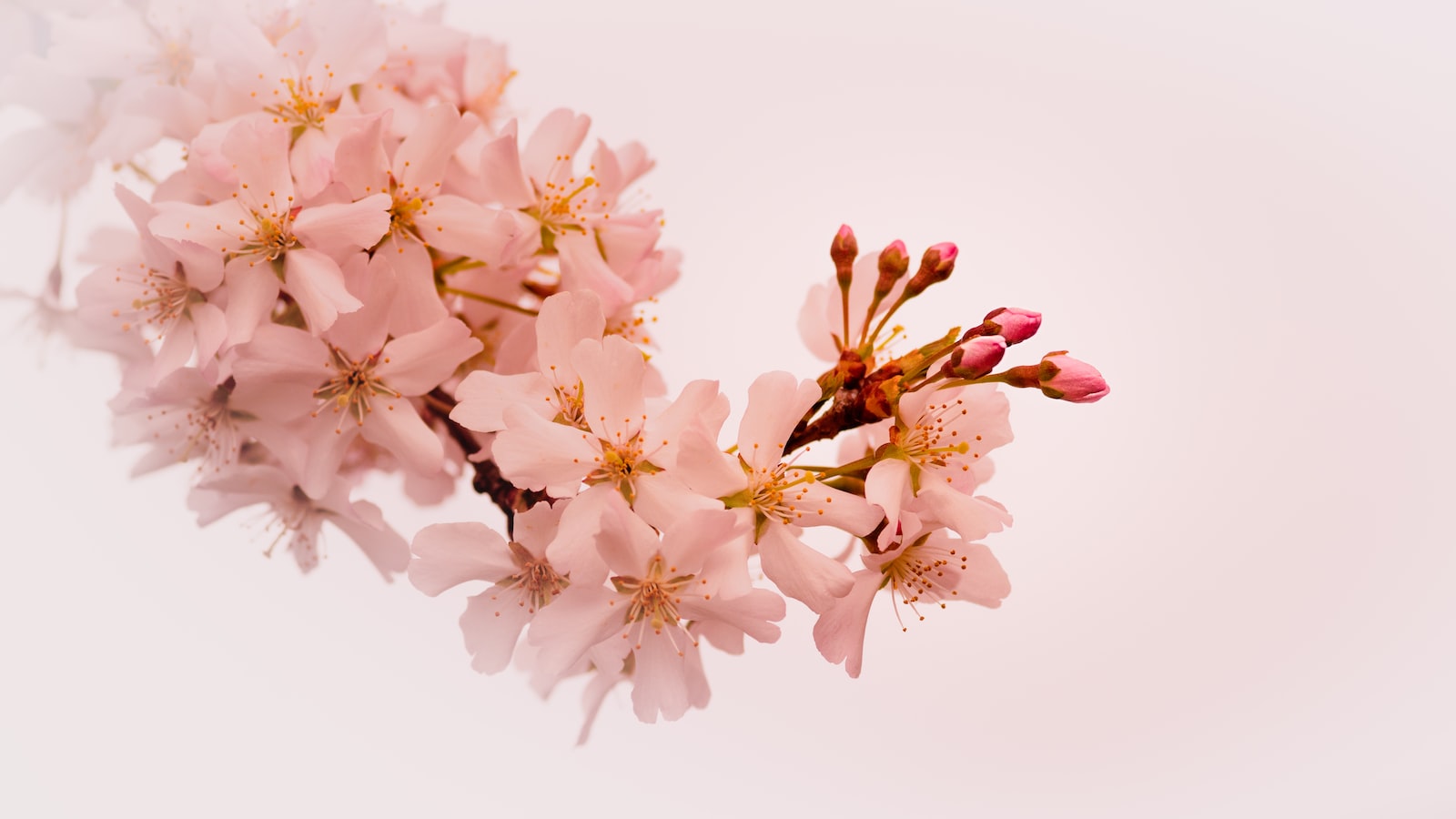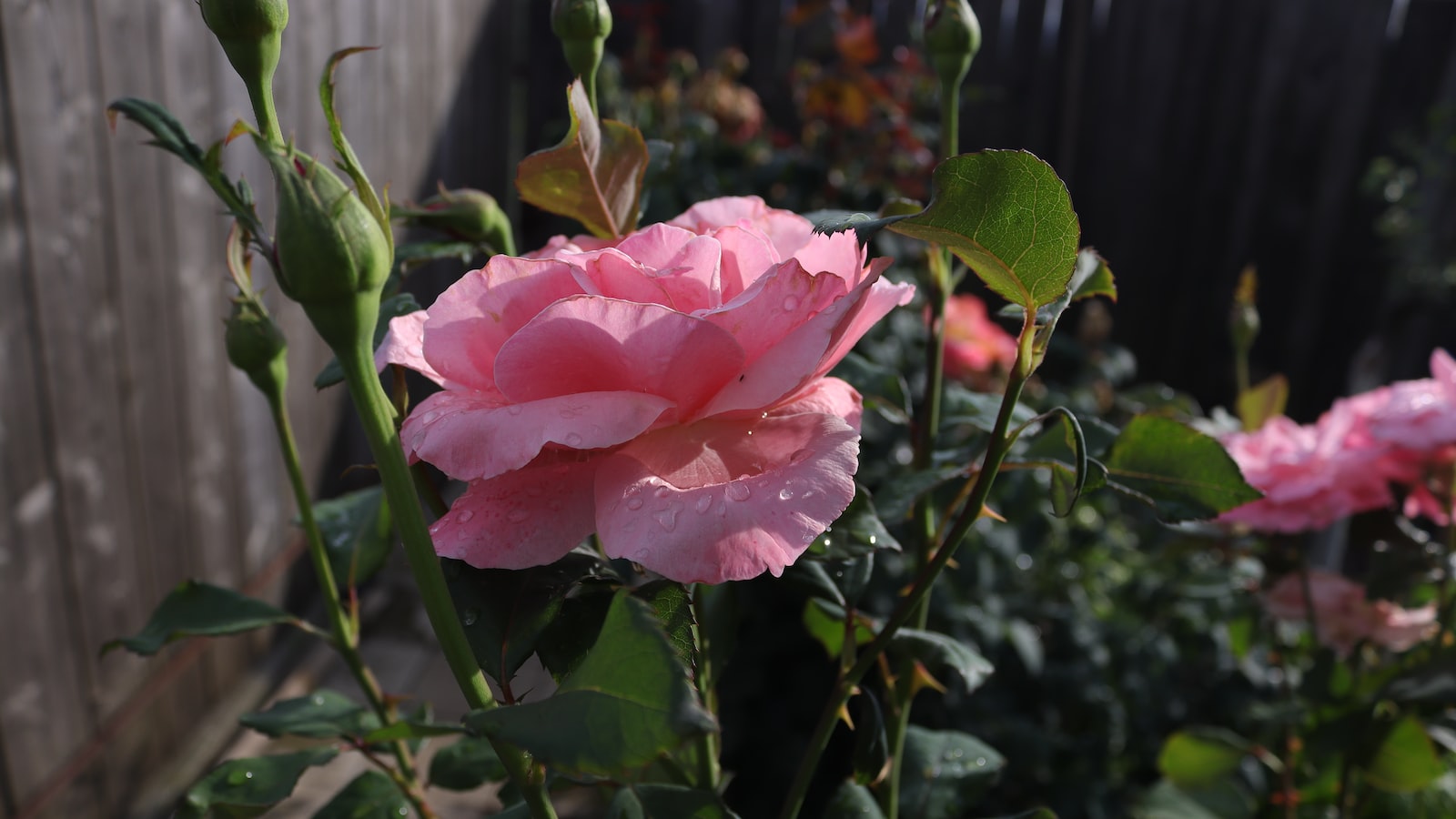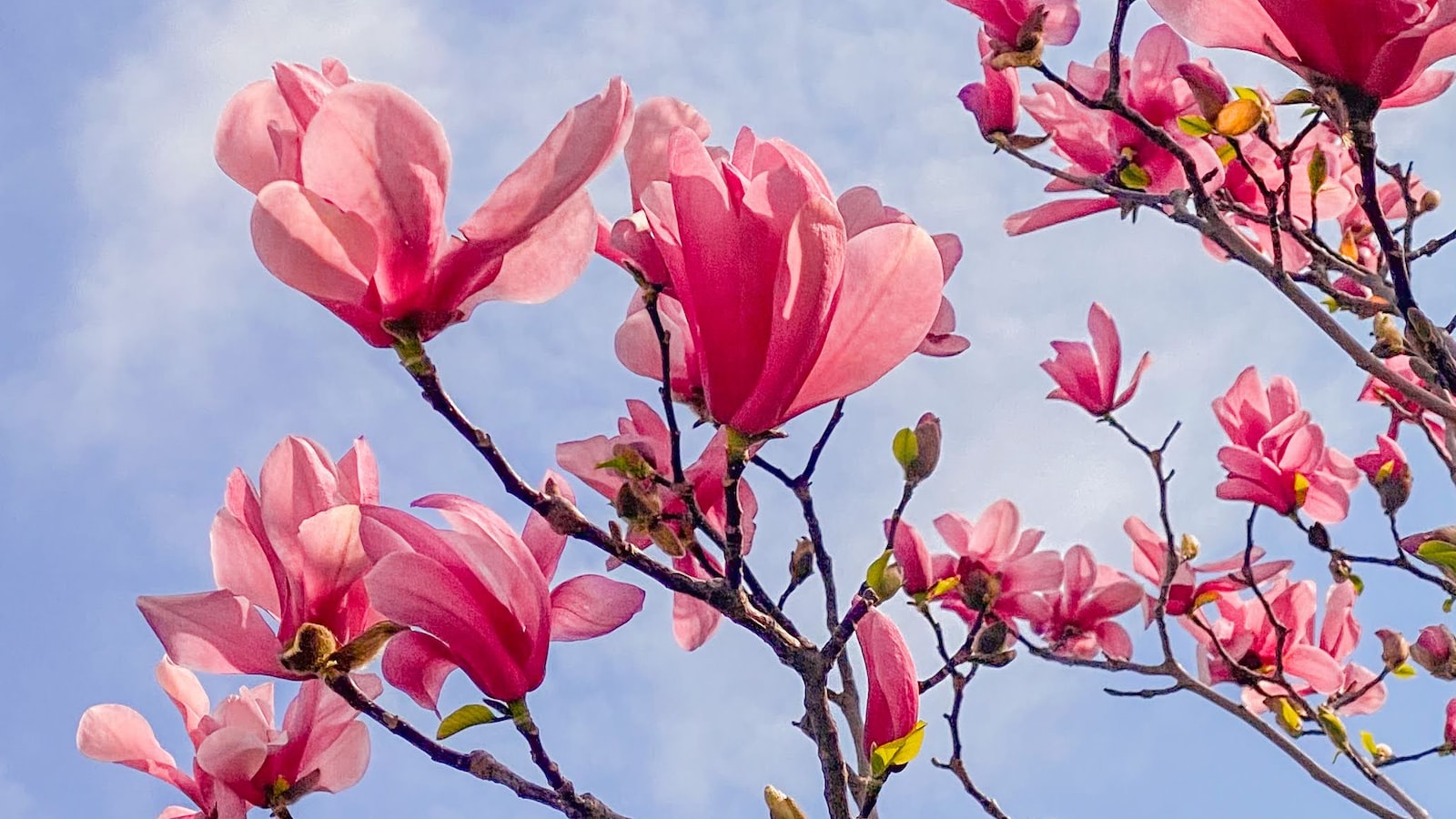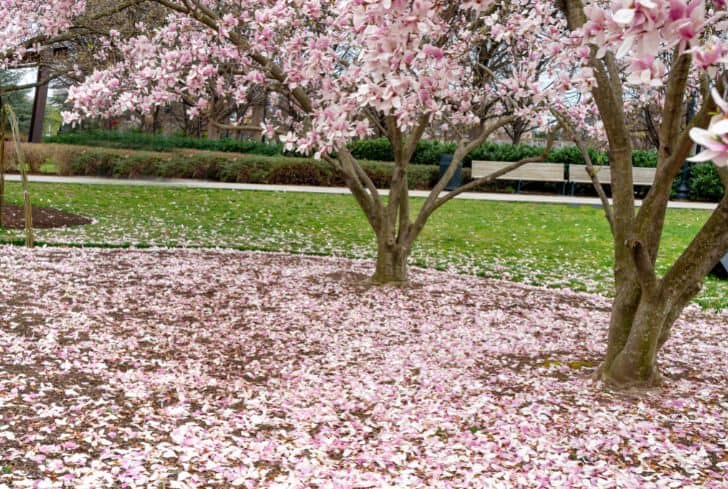Unveiling their resplendent colors and captivating fragrance, magnolia trees have long been celebrated symbols of nature’s grace and beauty. With their splendid blossoms stealing the spotlight in parks, gardens, and grand boulevards, one can’t help but wonder: how often do these majestic trees grace us with their much-awaited burst of floral grandeur? Delve into the enchanting realm of magnolia blossoms as we embark on a journey to uncover their blooming secrets. In this curious exploration, we will navigate the intricacies of magnolia trees’ flowering patterns, illuminating the veil of mystery that surrounds their transient yet extraordinary beauty. So gather your curiosity, for it is time to immerse ourselves in the mesmerizing rhythm of the magnolia blooming symphony.
Understanding the Blooming Schedule of Magnolia Trees: An In-depth Exploration
Magnolia trees, with their stunning blossoms and enchanting fragrance, have captured the hearts of nature enthusiasts for centuries. Exploring the blooming schedule of these majestic trees can offer a deeper understanding of their intricate beauty. So, how often do magnolia trees bloom? Let’s delve into this fascinating topic.
-
Blooming Frequency:
- Magnolia trees typically bloom once a year, during the spring season.
- However, the exact timing can vary based on factors such as climate, location, and the specific magnolia species.
- Some varieties, like the saucer magnolia (Magnolia x soulangeana), bloom slightly earlier in late winter or early spring, while others, such as the star magnolia (Magnolia stellata), may bloom a little later.
-
Duration of Blooms:
- When magnolia trees burst into bloom, they create a breathtaking spectacle that can last anywhere from a few days to several weeks.
- The duration of blooming largely depends on environmental conditions and the weather during that particular season.
- During this magical period, the magnolia tree graces us with its radiant display of large, fragrant flowers that can vary in color from soft pink and creamy white to vibrant shades of purple and magenta.
Now, let’s explore some exciting features and helpful tips for magnolia tree enthusiasts:
Features
- Grand, eye-catching blooms
- Fragrant flowers that perfume the surroundings
- Elegant, glossy green foliage
- Can reach impressive heights, becoming a focal point in any landscape
Tips
- Choose the appropriate magnolia species for your climate and soil conditions
- Provide well-drained soil and regular watering, especially during dry periods
- Apply a layer of mulch to retain moisture and regulate soil temperature
- Prune magnolia trees after blooming to shape and remove dead or damaged branches
Embrace the allure of magnolia trees by observing their blooming schedule and implementing the necessary care. These remarkable trees hold a special place in the world of flora, adding a touch of elegance and charm wherever they stand. Experience the joy of witnessing a magnolia tree in full bloom and let its mesmerizing beauty inspire your appreciation for nature’s wonders.

Factors Influencing the Frequency of Magnolia Tree Blooms: A Comprehensive Analysis
The frequency of magnolia tree blooms is a fascinating topic that draws the attention of both nature enthusiasts and gardeners alike. Understanding the factors that influence the blooming patterns of these majestic trees can greatly enhance our appreciation and allow us to cultivate them more effectively. In this comprehensive analysis, we delve into the intricate web of influences that shape the frequency of magnolia tree blooms, unraveling the secrets behind their blossoming beauty.
One key factor that affects the blooming frequency is the environmental conditions in which the magnolia trees thrive. These beautiful trees prefer mild climates with moderate temperatures and ample sunlight. As such, regions with cold winters or excessively hot summers may experience infrequent or limited blooms. Another crucial element is the soil quality and composition, as magnolias thrive in well-draining soil that is rich in organic matter. Additionally, the presence of certain pollinators, such as bees and butterflies, plays a vital role in the successful pollination of magnolia flowers, ultimately affecting the frequency of their blooms. Understanding these environmental factors and ensuring ideal conditions can encourage more frequent and vibrant magnolia tree blossoms.
To assist you in fostering optimal conditions for magnolia tree blooms, here are some key features and tips to consider:
| Features | Tips |
|---|---|
| Well-draining soil | Amend soil with compost or organic matter |
| Filtered sunlight | Provide light shade during the hottest part of the day |
| Pollinator-friendly plants | Plant nectar-rich flowers nearby to attract pollinators |
By taking these features and tips into consideration, you can create an environment that encourages a higher frequency of stunning magnolia tree blooms, delighting both yourself and those who wander into your garden. Let’s unlock the secrets behind the bloom frequency and witness the magnificent display of nature’s wonders.
Cultivating Optimal Conditions for Magnolia Tree Blooming: Expert Recommendations
When it comes to the captivating beauty of magnolia trees in full bloom, many enthusiasts wonder just how often these delicate blossoms grace our gardens. Magnolia trees are known for their spectacular flowers, with hues ranging from pale pinks to vibrant whites, often accompanied by a delightful fragrance that fills the air.
Magnolia trees typically bloom once a year, between the months of March and June, depending on the specific cultivar and the climate in which they are grown. This blooming period may last anywhere from a few days to several weeks, creating a picturesque display that is admired by all who pass by. To ensure your magnolia tree thrives and produces an abundance of blooms, expert recommendations suggest paying attention to a few key factors:
| Feature/Tip | Description |
|---|---|
| Sunlight | Magnolias prefer full sun to partial shade, so make sure they have access to at least 6 hours of direct sunlight daily. |
| Soil | Opt for well-draining, slightly acidic soil rich in organic matter. Consider adding compost or peat moss to enhance the soil’s fertility and drainage. |
| Pruning | Regular pruning to remove dead or damaged branches and shape the tree helps promote healthy growth and encourages more abundant blooming. |

Enhancing the Beauty of Your Magnolia Tree: Practical Tips for Encouraging Blooming
If you are a proud owner of a magnificent magnolia tree, you may be wondering how often these stunning trees bloom. Well, you’re in luck! Magnolia trees are known for their spectacular blossoms, and with a little TLC, you can ensure that your tree blooms to its full potential. Here are some practical tips to enhance the beauty of your magnolia tree and encourage abundant blooming:
-
Pruning: Regular pruning is key to maintaining the health and shape of your magnolia tree. Prune any dead or damaged branches in late winter or early spring, before the tree starts to bloom. This will not only promote healthy growth but also allow more sunlight to reach the new blossoms.
-
Fertilizing: Magnolia trees benefit from regular fertilization, especially in the spring. Use a slow-release, balanced fertilizer with equal amounts of nitrogen, phosphorus, and potassium. Apply the fertilizer around the drip line of the tree, avoiding direct contact with the trunk. A healthy dose of fertilizer will provide the necessary nutrients for robust blooming.
-
Soil Moisture: Magnolia trees prefer well-draining soil that is slightly acidic. Ensure that the area around the tree is not waterlogged, as excessive moisture can lead to root rot. However, do not let the soil dry out completely either. Water the tree deeply every 7-10 days during dry spells, and mulch around the base to retain moisture and regulate soil temperature.
-
Sunlight: Magnolia trees thrive in full sun or partial shade. Plant your tree in a location where it receives at least 6 hours of direct sunlight daily for optimal blooming. 5. Protect from Frost: Magnolia blossoms are especially vulnerable to late spring frosts. Cover your tree with a breathable fabric or sheet during frost warnings to shield the delicate blooms.
By following these practical tips, you’ll be well on your way to turning your magnolia tree into a blooming masterpiece. Remember, a little extra care goes a long way in nurturing these truly breathtaking trees. So, put on your gardening gloves and get ready to marvel at the breathtaking beauty of your magnolia’s blooms!
Frequently Asked Questions
Q: How often do magnolia trees unfold their breathtaking petals?
A: Take a breather, for the splendid magnolia tree blooms with much finesse, revealing its magnificent flowers once a year.
Q: When does this floral spectacle grace us with its presence?
A: As the cold of winter begins to fade and spring tiptoes in, the majestic magnolia trees prepare to burst into blossom. Typically, their bloom time starts in early to mid-spring, blessing our landscapes with their awe-inspiring beauty.
Q: Is there a secret to coaxing these stunning blooms out more often?
A: Alas, the magnolia tree, being a creature of nature, holds its secrets tightly. While some varieties may sporadically produce additional blooms in late summer or delicate blossoms in autumn, the grand show of magnolias is primarily reserved for the enchanting embrace of the spring season. In the beguiling realm of nature, where secrets unfurl amid delicate petals, we find ourselves enchanted by the iconic magnolia tree. Its timeless allure has captivated hearts for centuries, but amidst the hushed whispers and fluttering leaves, a question lingers still. How often, we wonder, does this majestic sentinel of beauty reveal its resplendent blossoms?
Like a clandestine dance with the heavens, magnolias hold their secrets close, teasing us with each passing season. While it may appear that their radiant blooms grace us only once in a blue moon, the truth, my dear reader, lies deeper within the enigmatic tapestry of nature’s symphony.
Enveloped in an aura of mystique, magnolia trees follow an intricate choreography that leaves us breathless. As the first blush of spring emerges from its slumber, delicate buds awaken, adorned in shades of ivory, blush, and velvety pink. A symphony of scents tickles the air, seducing gardeners and poets alike.
But in this ethereal display, timing reigns supreme. With the whims of the seasons guiding its every move, the magnolia patiently awaits the telltale signs nature broadcasts. As days grow longer, temperatures rise, and the frosty grip of winter surrenders, it emerges – a living poem unfolding before our very eyes.
However, dear reader, like all great mysteries, there is no universal answer. For within the realm of magnolias, each variety reveals its splendor at its own accord. Some display their blooming prowess with a luxurious flourish, gracing us for weeks on end. Others, with a more reserved charm, bless us with their fleeting beauty, rapturing our souls in a short-lived embrace.
But fear not, intrepid admirer of nature’s wonders! For the beauty of magnolia trees lies not solely in the grandeur of their blossoms, but in the anticipation that stirs our hearts each year. In those moments when the world holds its breath, we become witnesses to something ethereal, something only the resilient magnolia can bestow.
So, dear reader, as you wander through the ever-changing seasons, keep your gaze skyward, ever vigilant for the ethereal dance of the magnolia. Its blooms may be fleeting, but its magic is infinite – a reminder that life’s most beautiful moments are often the ones that grace us fleetingly, leaving an everlasting imprint on our souls. Let the magnolia tree, forever a guardian of beauty, inspire and captivate your spirit, for each bloom is a testament to the enchantment nature so generously gifts us.
- When to Put Weed and Feed on Lawn in Michigan - October 16, 2023
- When to Fertilize Potatoes Plants - October 16, 2023
- Can You Plant Clover in the Spring - October 16, 2023
Contents
- 1 Understanding the Blooming Schedule of Magnolia Trees: An In-depth Exploration
- 2 Factors Influencing the Frequency of Magnolia Tree Blooms: A Comprehensive Analysis
- 3 Cultivating Optimal Conditions for Magnolia Tree Blooming: Expert Recommendations
- 4 Enhancing the Beauty of Your Magnolia Tree: Practical Tips for Encouraging Blooming
- 5 Frequently Asked Questions

